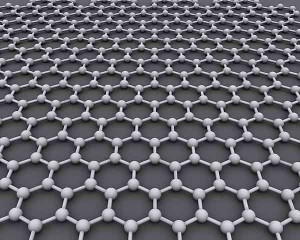Scientists have always known of the existence of graphene. After all, we all have used pencils once in our lives and the result of drawing using the writing device is the substance in question. Basically, it’s this one atom thick crystal that is one million times thinner than human hair and 200 times stronger than steel. The problem was: no one knew how to extract it out of graphite.
This is where two Russian-born scientists come in. Andre Geim and Konstantin Novosolev are researchers at the University of Manchester and in one of their Friday night experiments – sessions they hold not linked to their job to maintain interest in their field and generate new ideas – they accidentally created graphene with the help of Scotch tape.
The pair wrote a three-page paper describing what they had just discovered. It was rejected by Nature – twice – but eventually got published in the journal Science in 2004.
Since then, researchers all over the world have devoted time to studying this fantastic material that is as pliable as rubber and can stretch to 120% of its length. They also found that the material is a good conductor of heat and electricity.
Six years after Geim and Novosolev published their paper, they were awarded the 2010 Nobel Prize in Physics. As a result, the material they were able to create was lauded as “a wonder material” and one that “could change the world.” Researchers from various fields – medicine, chemistry, physics, electrical engineering – all come together to study this groundbreaking material.
As a result, the number of graphene-related patents have risen. The UK Intellectual Property Office alone reports of a jump from 3,018 in 2011 to 8,416 at the beginning of 2013. Samsung and Sungkyunkwan University in Korea, Zheijiang University in China and IBM in the US are the leaders in patent applications.
The possibilities are endless when it comes to products that can be developed using graphene: bendable computer screens, long-life batteries, very fast microcomputers, etc. Although the possibilities were endless, the amount of time it took to make the substance was lengthy and the temperatures too high. This is the area that Caltech staff scientist David Boyd was able to address with yet another accidental discovery.
Boyd wasn’t having luck with creating graphene by exposing methane to a heated copper surface. He got distracted by a phone call leading him to leave the copper on heat for a longer time than usual. Once he got back, he found that graphene was formed due to the added heat that removed a key impurity.
Basically, what used to take about 10 hours and a very high temperature to do can now be accomplished in around five minutes and at a lower temperature.
The discovery just opens of worlds of possibilities when it comes to graphene-based products. As Boyd told Pasadena Star-News, “You could imagine something crazy. You could wrap a building in graphene to keep it from falling over.”
External Resource
http://www.huffingtonpost.com/2015/03/19/better-graphene-making-process-breakthrough_n_6891226.html

Sorry, the comment form is closed at this time.